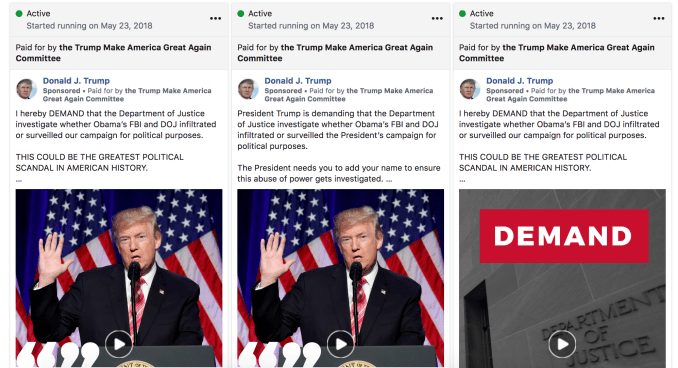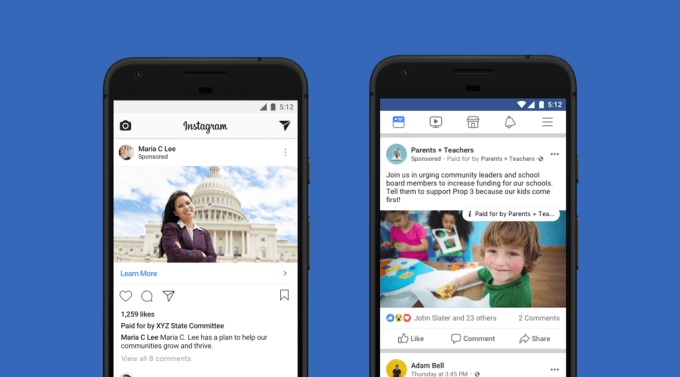Facebook pissed off journalists earlier this year when it announced that ads run by news publishers to promote their articles involving elected officials, candidates and national issues would have to sport “paid for by…” labels and be included alongside political campaign ads in its ads transparency archive that launched in June, albeit in a separate section. The News Media Alliance — representing 2,000 newspapers, including The New York Times and NewsCorp, plus other new organizations — sent a letter to Mark Zuckerberg in June protesting their inclusion. They claimed it would blur the lines between propaganda and journalism, and asked Facebook to exempt news publishers.
Now Facebook has granted that exception. Next year once Facebook has figured out more ways to verify legitimate news organizations that publish with bylines and dates, cite sources and don’t have a history of having stories flagged as false by third-party fact checkers, they’ll no longer have their U.S. ads appear in the Ads Archive. They also won’t have to carry a “Paid for by…” label when they appear in the News Feed or Instagram. News organizations will still have to verify their identity, but not through the political ads process. This exemption will roll out today in the U.K.
The change will also allow news outlets to run “dark post” ads that target specific users but don’t appear on their Pages. This will allow them to secretly test different ad variants without being exposed to potential criticism or competitors looking to copy their ad strategies.

Facebook’s political ads archive of campaign ads will no longer include publications promoting articles about politics or issues
Facebook will be using its recently built news publisher index to which outlets can apply to decide which ad buyers are exempt. That index is up and running in the U.S. and will expand to other countries, but Facebook still wants to build more safeguards against fake news outlets before starting the exemption in the U.S. For now, Facebook is using a third-party list of legitimate U.K. news outlets that’ll be exempted starting today. Jason Kint of publishers association Digital Content Next tells TechCrunch, “We are pleased that Facebook understands and values the important role of news organizations. We have worked cooperatively with Twitter who understood this from the beginning. We look forward to working in a similar fashion with Facebook.”

Facebook’s “Paid for by…” labels will no longer appear on news publishers’ ads on Facebook or Instagram
The change comes as Facebook rolls out enforcement of its political ads transparency rules in the U.K. today. “Now political advertisers must confirm their identity and location, as well as say who paid for the ad, before they can be approved to run political ads on Facebook and/or Instagram,” Facebook tells TechCrunch. These ads will also feature the “Paid for by…” label. Facebook hoped that by self-regulating ads transparency, it might avoid more heavy-handed government regulation, such as through the U.S.’s proposed Honest Ads Act that would bring internet political advertising to parity with transparency rules for television commercials.
The hope is that by determining who is paying for these ads, properly labeling them and exempting journalists, Facebook will be able to better track foreign misinformation campaigns and election interference. Meanwhile, users will have a better understanding of who’s funding the political and issue ads they see on Facebook.
[Update: This story has been updated to reflect that the news publisher exemption won’t roll out for U.S. outlets until next year.]
from Mobile – TechCrunch https://ift.tt/2DRGXni
via App Marketing

Comments
Post a Comment